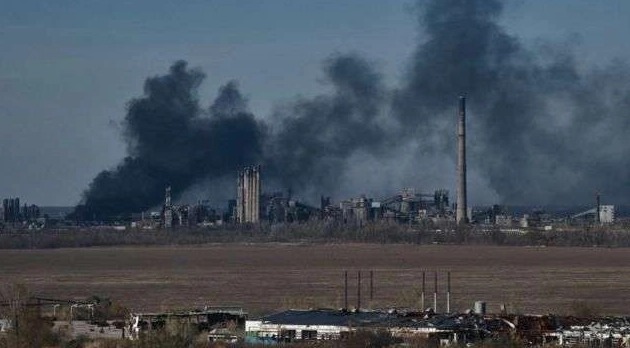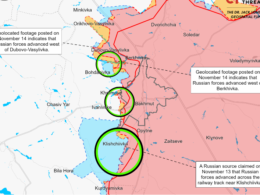Despite facing relentless assaults, Avdiivka has repelled the attempts by Russian sabotage and reconnaissance groups to infiltrate the city, according to Vitaliy Barabash, head of the Avdiivka City Military Administration.
In a statement made on “Ukrainska Pravda Live,” Barabash reported, “Right now, they are simply storming in this direction. It’s no longer about sabotage groups; these are full-scale assault operations… From the first days of the full-scale invasion, maybe after two or three weeks, the first sabotage groups tried to enter the city. And it’s been almost constant since then. There have been many such attempts during this period.”
Barabash added that Russians couldn’t enter and never managed to get into the city. “There have been many attempts thwarted on the approaches (to the city) – in the process, they almost reached the populated area and were also eliminated. Up to this moment, no group has entered the city,” he added.
Detailing the situation at the “Tsarska Ohota” restaurant, Barabash mentioned that this suburban complex was breached by Russian groups, but they were driven out: Ukrainian forces have controlled the complex for 2-3 days now.
This follows the analysis by the American Institute for the Study of War (ISW), which concluded from geolocational footage published on January 21 that Russian forces had advanced in the area of the “Tsarska Ohota” restaurant along Soborna Street in the south of Avdiivka and along the tree line to the southwest of the city.
The head of Avdiivka’s Military Administration highlighted that the worst situations are in the Marinka (Novomykhailivka), Kupiansk, and Bakhmut directions, but the situation in Avdiivka remains tense, though the enemy has not managed to break through into the city.
In his words, “There is pressure. There are assault operations. Yesterday, they even tried to storm in the direction of ‘Tsarska Ohota’ with equipment. There is pressure there, and it’s intense. They achieved certain results: the grey zone has definitely shrunk. Some positions were lost and retaken by our guys.”
“No one says that everything is okay and ‘sweet’ – far from it. But to say that all is lost – that is not true,” he added.
The General Staff of the Armed Forces of Ukraine reported on January 22 that Russian forces continue to press along the entire front line, with the most enemy attacks repelled in the Avdiivka direction.
The situation in Avdiivka has been extremely challenging due to the ongoing Russian offensive. Initially, Avdiivka, a city previously home to 32,000 people, transformed into a near ghost town due to relentless Russian shelling and airstrikes. The majority of the residents evacuated, leaving only a small number behind in this besieged area.
Russian forces have surrounded Avdiivka from multiple directions, but crucial supply routes to the west of the city remain under Ukrainian control. This has been pivotal in sustaining the Ukrainian defense. The Ukrainian Army has fortified Avdiivka with extensive networks of fortifications, trenches, and underground tunnels, which have been critical in withstanding intense artillery shelling. Furthermore, these defenses have been reinforced by additional troops and equipment, including US-made Bradley infantry fighting vehicles and German-made Leopard main battle tanks.
Despite Russia’s attempts to encircle and occupy Avdiivka with a large-scale offensive, their efforts have been largely unsuccessful. The Russians have not been able to cut off key Ukrainian supply routes or capture strategic positions like the Avdiivka Coke and Chemical Plant. This failure is partly due to the robust Ukrainian fortifications and the effective use of countermeasures like minefields, artillery fire, and kamikaze drones.
Both sides have incurred significant losses, but the Ukrainian forces’ tactics have proven effective in halting the Russian advances.
Related:
- Frontline report: Disjointed Russian attacks stall against stubborn Ukrainian defenses north of Avdiivka
- Frontline report: Russian assaults on Ukrainian positions near Avdiivka resume after fortnight respite to regroup units
- UK Intel: Neither side able to achieve breakthrough in Ukraine war
- Defense Ministry: Ukraine retakes 3 km² near Bakhmut
- Ukrainian troops advance 1-2 km in six directions near Bakhmut, capture 17 km² in south
- Russo-Ukrainian War. Day 372: Russia loses major tank battle in Vuhledar





